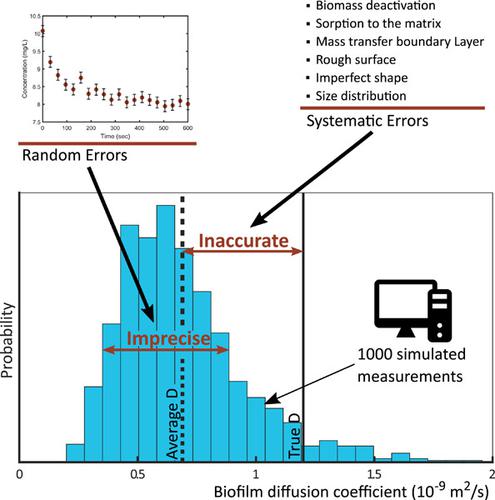当前位置:
X-MOL 学术
›
Biotechnol. Bioeng.
›
论文详情
Our official English website, www.x-mol.net, welcomes your
feedback! (Note: you will need to create a separate account there.)
How to measure diffusion coefficients in biofilms: A critical analysis
Biotechnology and Bioengineering ( IF 3.5 ) Pub Date : 2020-12-07 , DOI: 10.1002/bit.27650 Lenno van den Berg 1 , Mark C M van Loosdrecht 2 , Merle K de Kreuk 1
Biotechnology and Bioengineering ( IF 3.5 ) Pub Date : 2020-12-07 , DOI: 10.1002/bit.27650 Lenno van den Berg 1 , Mark C M van Loosdrecht 2 , Merle K de Kreuk 1
Affiliation

|
Biofilm and granular sludge processes depend on diffusion of substrates. Despite their importance for the kinetic description of biofilm reactors, biofilm diffusion coefficients reported in literature vary greatly. The aim of this simulation study was to determine to what extent the methods that are used to measure diffusion coefficients contribute to the reported variability. Granular sludge was used as a case study. Six common methods were selected, based on mass balances and microelectrodes. A Monte Carlo simulation was carried out to determine the theoretical precision of each method, considering the uncertainty of various experimental parameters. A model‐based simulation of a diffusion experiment was used to determine the theoretical accuracy as a result of six sources of error: solute sorption, biomass deactivation, mass transfer boundary layer, granule roughness, granule shape, and granule size distribution. Based on the Monte Carlo analysis, the relative standard deviation of the different methods ranged from 5% to 61%. In a theoretical experiment, the six error sources led to an 37% underestimation of the diffusion coefficient. This highlights that diffusion coefficients cannot be determined accurately with existing experimental methods. At the same time, the need for measuring precise diffusion coefficients as input value for biofilm modeling can be questioned, since the output of biofilm models has a limited sensitivity toward the diffusion coefficient.
中文翻译:

如何测量生物膜中的扩散系数:批判性分析
生物膜和颗粒污泥过程取决于底物的扩散。尽管它们对于生物膜反应器的动力学描述很重要,但文献中报道的生物膜扩散系数差异很大。该模拟研究的目的是确定用于测量扩散系数的方法对报告的变异性有多大影响。颗粒污泥被用作案例研究。基于质量平衡和微电极,选择了六种常用方法。考虑到各种实验参数的不确定性,进行蒙特卡罗模拟以确定每种方法的理论精度。基于模型的扩散实验模拟用于确定六种误差源的理论精度:溶质吸附、生物质失活、传质边界层、颗粒粗糙度、颗粒形状和颗粒尺寸分布。根据蒙特卡罗分析,不同方法的相对标准偏差范围为5%至61%。在理论实验中,六个误差源导致扩散系数被低估了 37%。这凸显了现有实验方法无法准确确定扩散系数。同时,由于生物膜模型的输出对扩散系数的敏感性有限,因此是否需要测量精确的扩散系数作为生物膜建模的输入值可能会受到质疑。
更新日期:2020-12-07
中文翻译:

如何测量生物膜中的扩散系数:批判性分析
生物膜和颗粒污泥过程取决于底物的扩散。尽管它们对于生物膜反应器的动力学描述很重要,但文献中报道的生物膜扩散系数差异很大。该模拟研究的目的是确定用于测量扩散系数的方法对报告的变异性有多大影响。颗粒污泥被用作案例研究。基于质量平衡和微电极,选择了六种常用方法。考虑到各种实验参数的不确定性,进行蒙特卡罗模拟以确定每种方法的理论精度。基于模型的扩散实验模拟用于确定六种误差源的理论精度:溶质吸附、生物质失活、传质边界层、颗粒粗糙度、颗粒形状和颗粒尺寸分布。根据蒙特卡罗分析,不同方法的相对标准偏差范围为5%至61%。在理论实验中,六个误差源导致扩散系数被低估了 37%。这凸显了现有实验方法无法准确确定扩散系数。同时,由于生物膜模型的输出对扩散系数的敏感性有限,因此是否需要测量精确的扩散系数作为生物膜建模的输入值可能会受到质疑。











































 京公网安备 11010802027423号
京公网安备 11010802027423号